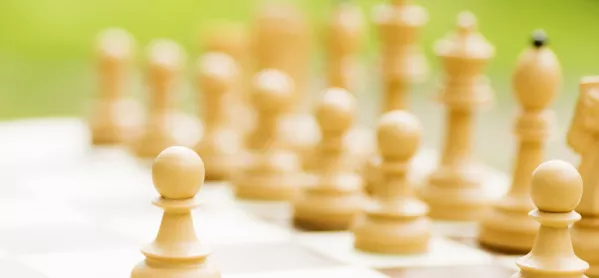Need to know: Scotland‘s plans for phased school return

First minister Nicola Sturgeon told the Scottish Parliament yesterday that the government was planning for a phased return to face-to-face learning from the week beginning 22 February.
She said preschool pupils would be the first to return full-time, followed by the full-time return of P1 to P3 pupils, and then the part-time return “on a limited basis, for senior-phase pupils”.
She said the plan was to allow these older students time in school to undertake “practical work that is necessary for the completion of national qualification courses” and that there would be “no more than around 5 to 8 per cent of a secondary school roll physically present at any one time for those purposes”.
Background: Pupils to start returning to schools from 22 February
First Minister’s Questions: Safety of vulnerable teachers ‘top of the agenda’
Also today: Some special-school staff to be prioritised for vaccine
Opinion: Digital teaching has left me hollow and incomplete
However, Ms Sturgeon’s statement sparked a flurry of questions from teachers keen for further information, which we address here:
Coronavirus: How will the school reopening plans work in Scotland?
What counts as ‘in-school practical work that is necessary for the completion of national qualification courses’?
The Scottish Greens’ education spokesperson, Ross Greer, asked John Swinney about this when the education secretary was questioned on Covid-19 plans by the Scottish Parliament’s Education and Skills Committee this morning.
Mr Greer asked if students would return to carry out science experiments and woodwork, or to produce written work under exam conditions so that teachers can provide evidence to support their estimated grades.
Mr Swinney said it was about “the first group of examples”, the practical work. He added: “So, for argument’s sake, for practical woodwork the use of specialist equipment to solder something together, or whatever that happens to be.”
The message on gathering evidence to support teacher judgements remains the same: the focus now should be on learning and teaching, and assessment should be carried out later in the school year.
When more pupils return, will social distancing be in place?
The Scottish government told Tes Scotland late yesterday, in the wake of Ms Sturgeon’s statement, that: “Two-metre physical distancing for adults and pupils will be required in secondary schools in the period immediately after a return.”
However, teachers of practical subjects question how this will be possible. A home economics teacher said: “Are practical subject teachers, who will need to be in close proximity to their students for long periods, immune to this virus? How can you help with complex, practical hands-on tasks from two metres away?”
Tes Scotland is waiting for information from the Scottish government on whether two-metre social distancing will be a requirement in primary schools when P1-3 pupils return.
The first minister said that 5 to 8 per cent of secondary students will be able to attend to complete practical work - but does that include the children of key workers and vulnerable pupils?
Mr Swinney confirmed today that the senior students attending school to complete practical work necessary for qualifications would be “in addition” to those already attending hub provision.
The latest Scottish government figures show that, overall, around 7 per cent of children are continuing to attend state schools, and that on Friday 29 January 3 per cent of secondary students attended school.
Mr Swinney said that the proportion of senior students to be allowed in school should not be seen as “a quota”, but as “a ceiling”.
He said that attendance would vary from school-to-school and if practical work had already been undertaken, there would be “no necessity” for students to come in.
Will teachers be prioritised for vaccination?
Teachers and school staff working with children with complex needs who are “undertaking tasks that are essentially health and social care-style activity” will be prioritised for vaccination, Mr Swinney told the Education and Skills Committee. Later, Ms Sturgeon was asked about the safety of vulnerable teachers. Mr Swinney said the government had written to education directors asking them to identify relevant staff.
He was also asked by the SNP MSP Alex Neil if it was time to “put the foot on the accelerator” when it comes to teacher vaccination more generally, given the government’s priority to get schools fully open. Mr Swinney said that teachers would be included in a number of the priority groups already identified by the Joint Committee on Vaccination and Immunisation (JCVI) and that discussions were ongoing about “other prioritisation that may relate to workforce groupings”.
Why are P1-3 being prioritised for a return to school, and not P7, given the importance of making a smooth transition to secondary?
Mr Swinney told the Education and Skills Committee that there was “no easy way through these dilemmas”. The state of the pandemic meant a “careful and proportionate” approach was needed, which was why the government had not been able to bring back all primary children. Nursery children and P1-3 had been prioritised because they find it “more challenging to engage in remote learning” than P4-7 pupils, he said.
Will asymptomatic testing be available before 22 February, given that pupils and teachers are already in school now, albeit in smaller numbers?
Mr Swinney said he expected “large measures” of the planned testing expansion to be in place before 22 February.
Register with Tes and you can read two free articles every month plus you'll have access to our range of award-winning newsletters.
Keep reading with our special offer!
You’ve reached your limit of free articles this month.
- Unlimited access to all Tes magazine content
- Save your favourite articles and gift them to your colleagues
- Exclusive subscriber-only stories
- Over 200,000 archived articles
- Unlimited access to all Tes magazine content
- Save your favourite articles and gift them to your colleagues
- Exclusive subscriber-only stories
- Over 200,000 archived articles